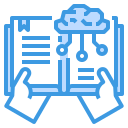The Role of Digital Tools in Personalizing Student Learning Paths
In today’s rapidly evolving educational landscape, the integration of digital tools has become pivotal in shaping student experiences and outcomes. Personalization in learning is no longer just an aspiration; it is an achievable objective made possible through advanced technologies. This page explores how digital innovations empower educators to tailor educational journeys to individual student needs, interests, and pacing, redefining the concept of one-size-fits-all education.
Adaptive Learning Technologies
Adaptive learning platforms leverage real-time data analysis to track student progress and understanding throughout their interactions with digital content. By continuously monitoring how students respond to questions or challenges, these systems can identify areas of strength as well as concepts that require additional reinforcement. This immediate feedback loop enables students and teachers to make informed decisions, granting each learner the opportunity to move forward only when they are truly ready.
A significant benefit of adaptive technologies lies in their ability to customize educational content for each individual. Rather than presenting all students with identical lessons, adaptive systems curate resources, exercises, and assessments based on the specific needs and abilities of each user. This personalized approach not only keeps students engaged but also helps in addressing learning gaps, ensuring a more comprehensive and meaningful educational experience.
One-size-fits-all pacing often leads to frustration for both advanced learners, who might feel constrained, and those who require more time to master concepts. Adaptive learning tools resolve this by allowing students to progress at their own rate. The platform determines when a learner is ready to tackle more challenging material or needs additional practice, fostering a supportive environment that accommodates varied learning speeds without compromising educational standards.
Data-Driven Instruction
The use of digital tools facilitates the delivery of timely, personalized feedback to each student. Instead of waiting days or weeks for results, learners can receive instant responses to their work. These insights are often detailed, highlighting both achievements and areas in need of improvement. This immediacy empowers students to engage in self-correction and promotes a growth mindset, making learning more interactive and productive.

Choice in Learning Resources
Modern digital platforms provide students with a diverse array of learning resources to choose from, including interactive videos, articles, simulations, and quizzes. This variety allows students to select materials that resonate with their preferred learning modalities and interests. By making informed choices about how they learn best, students become active participants in their education, which can boost confidence and enthusiasm for learning.
Goal Setting and Progress Tracking
Another way digital tools encourage agency is through built-in features for goal setting and progress tracking. Students are prompted to define their learning objectives and monitor their advancement toward those goals. This transparency helps learners understand what is expected and how far they have come, fostering a sense of responsibility and self-reflection. Over time, these skills contribute to greater autonomy and a more personalized learning experience.
Encouraging Self-Paced Exploration
Unlike rigidly structured traditional classrooms, digital tools allow for self-paced exploration of topics. Students have the freedom to revisit challenging materials, delve deeper into areas of interest, or move ahead when they feel confident. This flexibility supports a love of inquiry and encourages students to become self-motivated learners, thereby enriching their educational journey far beyond the classroom walls.
